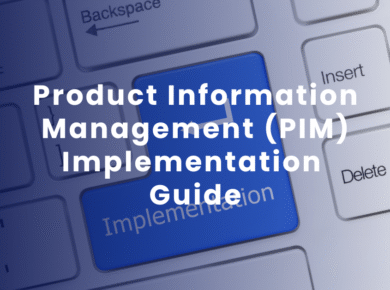How Will GenAI Redefine the Hybrid Shopper Experience? Read Blog Holiday shopping
Continuing from “How to Choose a PIM Vendor – Part 1“, let’s dive into the next set of essential questions that focus on smart automation, cross-functional workflows, and digital shelf performance.
11. How well does the system manage product variants and retailer-specific versions?
Retailers often require different formats or fields for the same product. The PIM should enable teams to manage base product data alongside tailored versions, all governed by rules, workflows, and a traceable version history.
12. Is the platform equipped to manage channel-specific versions of content?
A robust PIM platform needs to handle channel-ready content, including modified titles, descriptions, and imagery, customized for each sales channel or partner. This ensures consistency, while honoring individual channel requirements.
13. Can retailer-specific schemas be used for validating product data by the platform?
Retailer requirements can be complex and frequently updated. The platform should provide tools to validate product data at a granular level, ensuring compatibility with current schemas before distribution begins.
14. Can product data be distributed across all your sales and marketing channels?
A PIM should support omnichannel publishing, from major marketplaces and D2C websites to internal portals and B2B partner networks. Consistent and fast distribution improves visibility, accuracy, and time-to-market.
15. Does the platform support complete commerce orchestration, from listing to post-sale?
Beyond just product publishing, look for a platform that enables end-to-end commerce capabilities, from syncing inventory and managing orders to optimizing the post-purchase experience.
16. Can teams monitor digital shelf performance and surface actionable insights?
The digital shelf holds critical clues to product performance. Your PIM should tap into this ecosystem, capturing data such as product visibility, pricing accuracy, ratings, and customer engagement, to support continuous improvement.
17. Does the platform embedded with AI and machine learning capabilities?
As product data grows in complexity, intelligent PIM platforms utilize AI to identify anomalies, suggest enhancements, and even predict success or failure based on historical patterns. These insights enable proactive decisions and reduce manual oversight.
Also read: How GenAI Is Redefining PIM and MDM in 2025?
18. How well are processes, as governed by organizational requirements, facilitated by the workflow engine?
The platform should support customized workflows, including task assignments, branching approvals, and conditional logic. This ensures that internal processes are accurately mirrored and scaled across teams.
19. Can complex workflows across departments and external partners be managed by the system?
Cross-functional workflows are the norm in large enterprises. The PIM should provide visibility, coordination, and automation across internal teams, vendors, agencies, and channel partners — all while maintaining compliance and audit trails.
20. Does it support internal process modeling and progress tracking?
A modern PIM should go beyond data, offering built-in project management features to help teams monitor task status, flag bottlenecks, and maintain accountability across all stages of product content lifecycle.
Key Takeaway
Selecting a Product Information Management (PIM) Software vendor is not only a technical decision but a strategic investment in digital agility, data trust, and omnichannel commerce. The right platform doesn’t just support product content, it also strengthens collaboration, improves governance, and accelerates growth. By asking the right questions, and going deeper than surface-level features, enterprise leaders can ensure their PIM solution becomes a core enabler of both operational excellence and customer experience.
Ready to take the next step in your PIM journey? Connect with our experts to discover how the right platform can transform your product data into a competitive advantage.
Latest Resources
How Unified Data Can Keep You Ahead This Holiday Read Blog As
Enterprise Data Management in Transition: 2026 Trends and AI-Driven Shifts Read Blog
Unlocking Growth: Why PIM DAM Integration Is a Strategic Imperative Read Blog
Mastering Product Data Syndication: A Business-Centric Approach Read Blog Why Accurate Product
The Hidden Costs of Missing Metadata in Digital Asset Management Read Blog
Key Takeaways: Identify the Right Time for PIM: Gain clarity on identifying
PIM vs MDM: What’s the Difference and When to Use Each? Read
Questions to Ask When Choosing a PIM Vendor? - Part 2 Read
Questions to Ask When Choosing a PIM Vendor? - Part 1 Read









